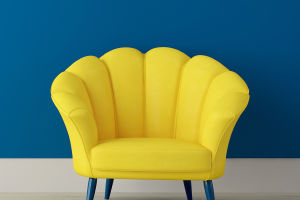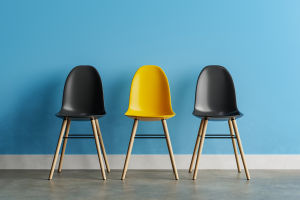Using violet in interior design imparts a distinctive sense of elegance and mystery to any space.
This color melds the tranquility of blue with the passion of red, creating a visual effect that is both soft and profound.
Violet is often associated with romance, creativity, and enigma, and its thoughtful application in interior design can infuse a room with depth and a comfortable atmosphere.
When selecting violet as a wall color, the tone should be adjusted according to the size and lighting conditions of the space. For smaller rooms, a light violet shade can make the area appear more open and bright.
In contrast, dark violet is more suitable for larger spaces, where it can create a calm and visually impactful effect. To make a room feel more serene and relaxing, use violet on the walls paired with lighter-colored decorations to balance the overall visual impact.
Violet-colored furniture can also serve as a focal point in interior design. Pieces such as violet sofas, chairs, or headboards can introduce a unique color and personality into the room. When selecting fabrics like curtains, rugs, and cushions, incorporating violet can help unify the overall design.
If the space already features dominant violet hues, it’s important to avoid a visually monotonous effect by pairing it with neutral tones such as gray, beige, or white. This approach helps maintain balance and harmony in the design.
Decorative artwork presents another opportunity to enhance a space’s style and depth. Paintings, sculptures, or other art pieces in violet tones can become focal points on walls, showcasing the distinct allure of violet while enriching the room's artistic ambiance. For example, an abstract painting with violet hues or a violet sculpture can make the space feel more dynamic and full of character.
Lighting design is equally crucial in achieving the desired atmosphere. Choosing violet lamps or lampshades can cast a warm violet glow and add an element of mystery to the space. Accessories such as vases, tableware, or other decorative items in violet can further embellish the room, enhancing the overall design.
In terms of color coordination, combining violet with neutral tones like gray, white, or beige can produce a balanced and sophisticated interior effect.
This approach not only highlights the unique appeal of violet but also prevents the space from appearing too monotonous or dull. A neutral background helps violet stand out as the visual focus of the room, adding a sense of dimension to the design.
Additionally, pairing violet with metallic tones such as gold, silver, or copper can infuse the space with a sense of luxury. The sheen of metallic accents combined with the softness of violet can create an elegant and understated effect.
This combination works well in spaces such as master bedrooms or living rooms where a touch of sophistication is desired.
Incorporating green plants is another effective way to enhance the vitality and depth of the space. The natural green of plants contrasts strikingly with violet, making the room appear more vibrant and lively.
Against a violet backdrop, the presence of greenery not only adds vitality but also helps the space feel more natural and inviting.
By using violet thoughtfully, one can create a distinctive atmosphere in various rooms such as bedrooms, living rooms, or studies. Whether applied to walls, furniture, decor, or lighting, violet can be a standout feature in interior design, adding a splash of brilliance to your home environment.


